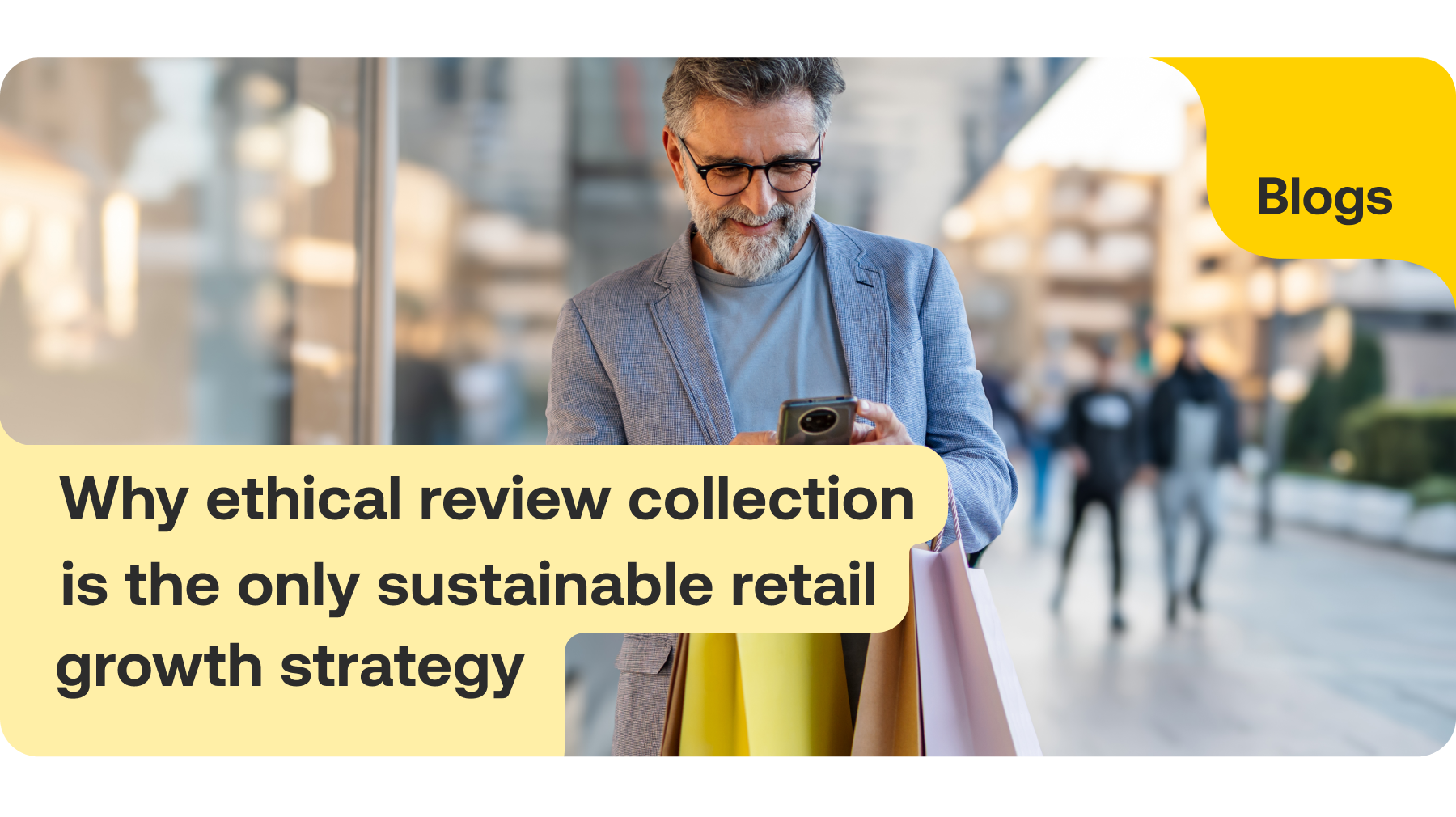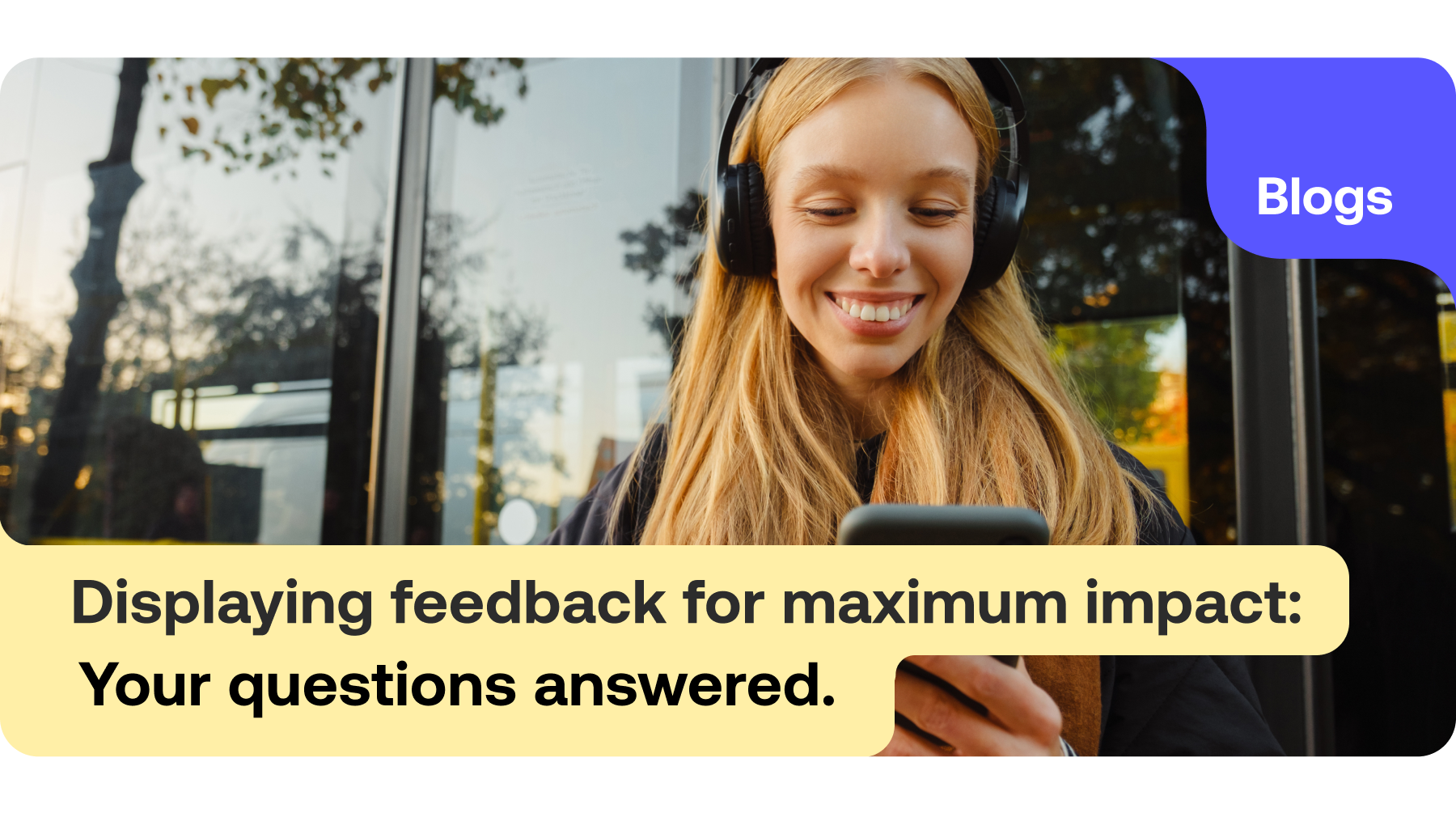Search engine optimisation is the key to attracting people to your website. Learn the basics of SEO and how you can increase your organic traffic with Feefo.
Getting to the top of search engine results is a great way to boost organic web traffic and brand awareness. The process of getting there is called search engine optimisation, or SEO.
The aim is to move your way up the rankings by making your content as valuable as possible to search engines. SEO is a huge topic covering lots of different areas, but it’s usually divided into two main pillars: technical SEO and content management.
In this guide, we look into how technical SEO and content management can work together to attract more visitors to your website.
What is SEO?
Search engine optimisation (SEO) is the process of making sure that your website pages appear higher than your competitors in the organic search engine results. It means creating content that search engines can find and consider relevant enough to show in the search engine results pages (SERPs). The higher you appear, the more likely you are to drive visitors to your site.
Keywords are still very important in your SEO. You need to know exactly what keywords you want to target, then make sure to use them strategically throughout your content. Here are some important areas where you’ll want to place your keywords:
- Headers (H1 and H2s)
- Meta title
- Meta description tags
- Hitting a specific keyword density in your body text
You mustn’t overdo your chosen keywords, known as “keyword stuffing”. Try to use keywords strategically so that your pages maintain a logical flow and a high-quality level of content. The Google algorithm will pick these up and show the pages for the relevant search queries in SERPs.
There are strict Google guidelines about keyword usage, so it’s best to brush up on the dos and don’ts.
What is technical SEO?
Technical SEO is about making websites easily accessible to bots so that they can be indexed and show up in the search results. It can significantly increase the amount of organic traffic to a site, especially if the website wasn’t initially built with SEO in mind.
It encompasses everything from fixing broken pages, dealing with redirect issues and site speed to tackling complex JavaScript issues. Technical SEO specialists will be able to offer plenty of solutions to get your website ready for the search engines when their bots come crawling.
What is content management?
Content management takes care of the content strategy, keywords, and improves where the site appears in the SERPs. Creating a content strategy is the process of planning out what content you’re going to publish on your website and in which order to increase organic traffic.
Creating an effective strategy can help you to create content which is meaningful, engaging and most importantly, relevant to your target customers. It can also help you to:
- Build trust with your audience
- Engage with your customers on a personal level
- Improve your brand awareness
- Increase visibility and organic traffic to your site
There are a few things that you’ll need to consider and include when planning out your content strategy.
1. The basics
No matter which industry you operate in, there are some specific pages that you need to include on your site to keep the organic traffic coming in. They will tell your brand’s story, remain relevant over time, and will answer all of your customers’ questions. These are:
- Your homepage
- Your ‘about’ page
- Your contact page
- Your products or services pages
2. Blog articles
Your blog section can do a lot to increase your organic traffic. Publishing fresh content regularly means that search engines, like Google, will know that you’re relevant. This will help them to crawl and index your site more frequently.
Blog articles are usually written with a set of keywords in mind. While SEO-optimised blog posts are beneficial for increasing organic traffic, articles which haven’t been optimised, such as news stories, can help to keep your site relevant too.
3. Website architecture
Website architecture is about how you link your pages together, so search engines can easily find what they’re looking for.
For example, if you have pages on your site that are several clicks away from your home page, a bot will have a hard time finding those pages. The key is to keep things simple, with every page on your site no more than four clicks or so away.
With the right keyword strategy in place and the more SEO optimisation you do across your site, the higher the chance that you’ll start to rank better in search and become more competitive in your niche. All of which are crucial in encouraging more organic traffic to your site.
What is organic traffic?
Any visitor that lands on your website from a SERP after clicking an unpaid search result makes up the organic traffic to your site.
They may have searched for your brand specifically and landed on your homepage, or maybe they were looking for certain information that a page on your site happens to rank high for. Either way, if they find your website after using search engines like Google or Bing, they’ll count towards your organic traffic.
It’s important to remember that SEO is a long game. There’s no quick fix that will get you to the top of the SERPs overnight. It requires a well-thought-out content strategy and paying constant attention to the technical aspects of SEO to build momentum.
How can you improve your organic traffic?
A combination of technical SEO and content management techniques can get your site moving up the rankings and improve your organic traffic.
Here are a few of the techniques we’d recommend:
1. Content marketing
To gain as much organic traffic to your site as possible, you need to make sure that you’re writing content aimed at your buyer personas and catering to the journey that they’re on. What do they want to hear from you? What will they engage with?
This won’t send your organic traffic through the roof, but it means that your content will be more engaging, more valuable, and more shareable.
Here’s what we suggest you think about before you hit ‘publish’ on your latest piece of content:
- Is the content findable? —Make sure your content includes everything it needs for Google to find and understand it. That includes relevant keywords, H1 and H2 tags, metadata, and alt tags for any images you’ve used.
- Is the content readable?—Have you included easy-to-read, bulleted lists, and headers?
- Is the content understandable? —Have you considered the audience’s reading level? Is it in context? Have you considered the personas that you’re writing for?
- Is the content actionable? —Have you included a call to action? How about a place to comment? Have you linked to any other related content?
- Is the content shareable? — Have you given the reader a good reason to share your content? Is it saying something new or informative? Can the content easily be shared to the reader’s social media and then personalised with their own comments and hashtags?
2. User-generated content (UGC)
User-generated content, or UGC, is any type of content such as photos, videos, text, or even customer reviews that are created by your customers. UGC is uploaded to social channels, review platforms, or your own website.
Not only is UGC completely free, but it’s also more authentic. 90% of consumers say that authenticity is important when deciding which brands they want to support, so the more you can do to humanise your content, the better.
UGC can also benefit your organic traffic by:
- Ranking for long-tail keywords — It’s likely that fewer sites will be targeting hyper-specific long-tail keywords (three or four-word phrases), but identifying them can be difficult. Your customers’ positive and negative comments highlight what matters to them, so use these phrases to your advantage by including them in your product descriptions to optimise your product pages.
- Improving your social media optimisation (SMO) — It’s just as important to optimise your brand’s social media account as it is your website. UGC helps to create interactions like shares, comments, and likes which can have a positive impact on your SEO. Posts linking back to your brand with a lot of interaction are likely to appear high in search results when someone searches for your business.
- Incorporating photo and video reviews —Search engines value video and photo UGC because this is exactly the type of rich media content users are searching for. A search engine’s role is to provide the most relevant and high-quality content to its users, so as long as your content is optimised, it has a chance to rank well organically.
3. Internal linking
Internal linking is how your webpages connect to create a navigation menu that both users and search engines can use to get around your site easily and find the content they need. An internal link is any link that takes you from one page on your website to another page on the same site.
The easier you make it for search engines to move around your site, the more likely it is they’ll find the content they’re looking for and rank your pages higher in the SERPs.
4. Backlinks
Backlinks are just as important, if not more so, as internal links for improving your ranking and driving organic traffic to your site. Backlinks are all the links on the internet that link from external websites back to yours.
Theoretically, quality and relevant backlinks increase your website’s Domain Authority (DA). High DA translates to more trust in the eyes of Google and can have a positive effect on the rankings of your website.
Here are a few methods for building trusted backlinks for your website:
- Broken link building (finding a dead page on a website and asking linkers to swap to your site)
- Contributing guest articles to third-party sites
- Infographics & Digital PR Campaigns
- Promoting your own content
- Contacting webmasters, journalists, and third-party content creators
- Interviews and PR activity
To get the best results, you should pay close attention to both backlinks and social mentions. Create an SEO strategy that responsibly builds backlinks but also helps develop your brand identity, so you organically create linkless mentions wherever possible.
For more on how you can develop your brand and start improving your linkless mentions, check out our article on brand development.
5. Off-page SEO marketing
Off-page marketing is any activity that takes place outside of your own website, either on third-party websites or social media, to try and improve its rankings.
The aim is to increase your brand recognition around the web to help tell the likes of Google what others really think of the quality of the content on your site. The more backlinks and brand mentions you have elsewhere, the more search engines can trust your content and will view you as ‘subject matter experts’ in your field.
Backlink building falls under your off-page SEO marketing efforts and perhaps plays the biggest and most important role in influencing your search rankings and organic traffic. However, there’s so much more to off-page marketing that, if done right, will further your SEO cause even more.
A few other off-page marketing tactics include:
- Increasing brand mentions by:
- Guest blogging
- Appearing on podcasts
- Doing interviews with key online publications
- Optimising your Google My Business page
- Collecting customer reviews through trusted third-party sites
- Growing your social media presence
6. Schema
Also known as structured data, schema plays a big role in your site’s ability to drive organic traffic.
Schema is essentially a semantic vocabulary of structured data that you can add to your website’s HTML. It allows search engine bots to better understand the content of each web page so search engines can decide the most relevant pages to show a user in the SERPs.
JSON LD is the preferred language for Google right now, which is what we use here at Feefo in our integrations. Its simpler script-based approach means that you can easily insert it as a single block of code within the <head> or <body> of the page.
Adding product schema to your product pages, although not openly admitted by Google, is a great way to help search engines rank your pages for related product searches. The more information you can give to the likes of Google, the more detailed and informative your search results appear to consumers.
7. Reviews
Whether you’re using our on-page integration to display your reviews across your website or using product schema to create more compelling search results for your key products, there’re plenty of ways your customer reviews can help you drive more organic traffic to your site.
Used properly, your customer reviews can have a huge impact on:
- Search rankings
- Organic traffic
- Conversion rates
- Bounce rates
- Time spent on page
A steady flow of fresh, original, and relevant content hitting your site is a good way of building up pages without much text and indicating to search engines that they’re worth showing in the SERPs.
You should make it as easy as possible for the Googlebot to crawl your reviews by using JavaScript prerender tools wherever possible. As an extra help for Googlebot, our on-page integration inserts Review Schema markup and marks up review content on your pages so that search engines can easily find it and count it towards your SEO.
Collecting customer feedback can also make you eligible for Google Star ratings: a trust signal which shows alongside your organic pages. Learn more about Google reviews and Star Ratings here.
Get help with your SEO today
There is so much you can do to increase the organic traffic to your site; a combination of a solid content marketing strategy with some well-chosen and placed technical SEO measures are likely to do the trick.



